Ikea paves way for first Indian store
- Published

Ikea has started work on its first store in India, in the southern city of Hyderabad. Due to open by the end of 2017, the Swedish furniture chain is hoping to overcome the challenges that have quashed other international companies entering this market, writes Shilpa Kannan.
Men and women wearing hard hats and bright yellow shirts are standing in a line, shovels in hand. As they dig the earth on the count of three, the crowd cheers on wildly.
While the beginning of the building work is a big accomplishment for the flat-pack furniture specialists, it's a bigger victory for India.
Bringing international retail experience to India has been among the most controversial and fiercely opposed decisions here.
To be part of the $600bn (£460bn) Indian retail market, Ikea has pledged to invest over $1.5bn (£1.2bn) in India over the next 10 years.
While other global retailers like Wal-Mart, external and French hypermarket chain Carrefour hit a wall here and abandoned plans, Ikea is building a symbolic stone wall on its new 13-acre plot of land in Hyderabad.
As people queue up to sign their names on the rocks, the retailer says it is a long-term relationship with the country: while the company will bring its global products here, it also wants to see what would best suit Indian homes.
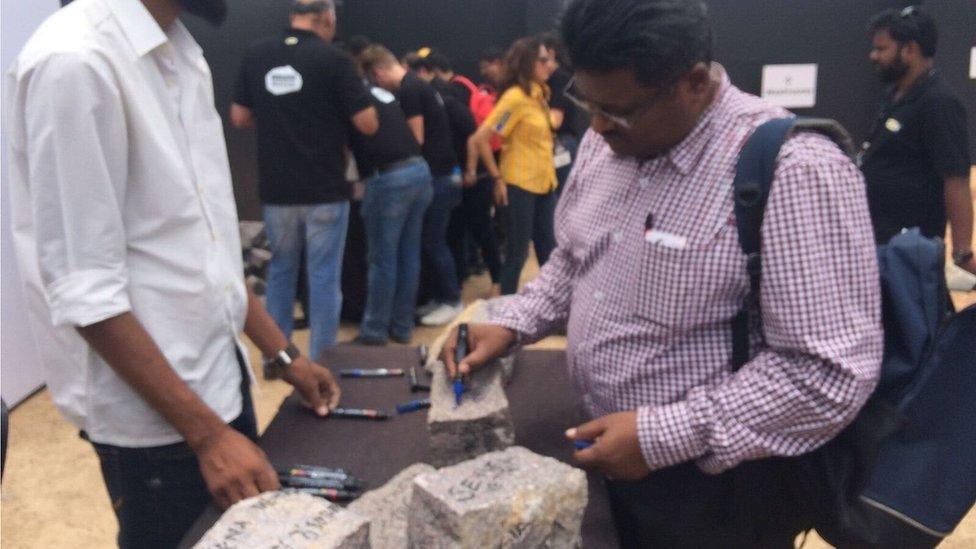
Workers sign their names on stone blocks at the building site
"We have to lead business with reality. We cannot lead business with only PowerPoints and Excel sheets and documents. We are extremely obsessed in life at home," says Juvencio Maeztu, the retailer's India chief executive.
So he and his team conducted research, visiting more than 500 homes in Hyderabad to try to understand what people want.
"We see their bedrooms, toilets, kitchens and then we sit down and then we talk. And then we ask: 'What would you like to change?'"
That's the big challenge they now face - wooing customers here.
Family shopping
The home furniture industry in India is estimated to be worth $20bn and is growing rapidly.
I decided to visit Naampally, a noisy, bustling furniture market in the old part of Hyderabad, to find out more.
The entire street is lined with showrooms selling everything from seven-seater sofas, to large four-poster beds with elaborate fabric canopies, to hand-carved mirrors.
And it's not a quick affair. Entire families come here to spend time checking out the furniture, trying them out and discussing designs and the kind of wood they want.
Over endless cups of sweet tea and biscuits, a deal is struck.
This is what most of India's furniture market looks like - unorganised and chaotic but doing thriving business.
Unfazed
At one store, Interior Park, the furniture is mostly made of teak wood. Sofas here range in price from $1,500 up to $10,000.
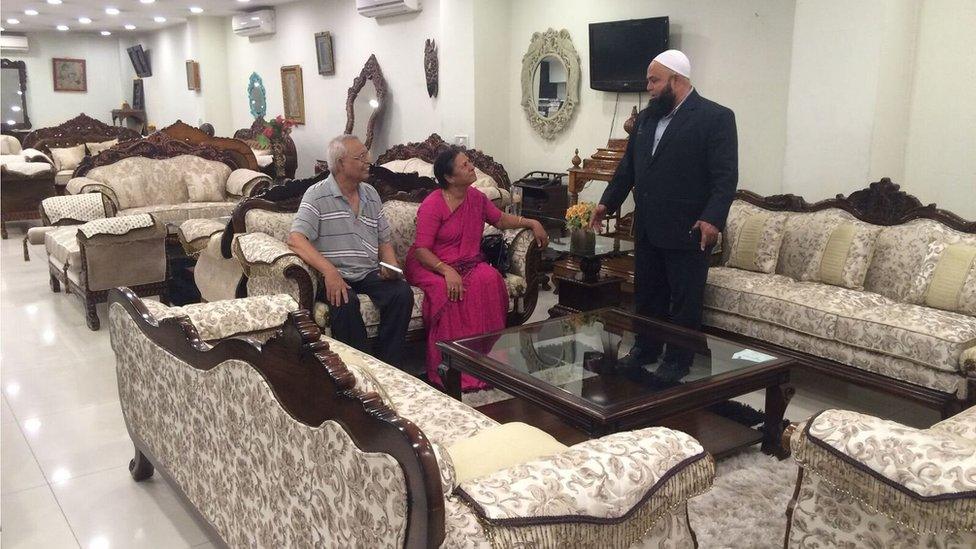
India's traditional furniture shops sell ornate, heavy furniture
The owner, Deepak Kumar Agarwal, has been in the furniture business for three generations. He says he's not threatened by Ikea.
"We are not just selling mass furniture, it is all handcrafted. Some pieces take one month, some pieces take two months, and some pieces have a three-month waiting period."
Customers seem willing to wait.
Like 63-year-old Dilip Vatsa, who has always come here for his furniture.
He says when he picks up a piece he expects it to last forever.
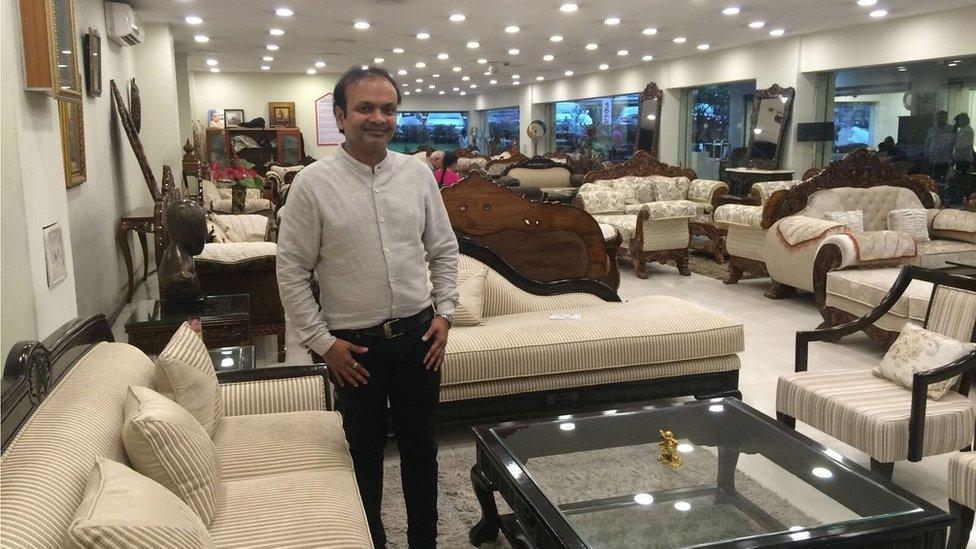
Furniture shop owner Deepak Agarwal is unfazed by the arrival of Ikea in the market
Deepak Agarwal agrees.
"In India furniture is just like gold and silver - people consider it as an investment. And our kind of furniture is durable for generations. We have our unique place and Ikea has its own place. When new players come into the market, with competition business grows, it never comes down."
New generation
But while older people may still come to markets like Naampally, Ikea is targeting a new breed of Indians.
Its new store will be in the heart of new Hyderabad, home to some 400,000 IT professionals - all young, wealthy and well-travelled.
Like Ayanti and Prashant Reddy. They have just bought a new cot for their seven-year-old son.
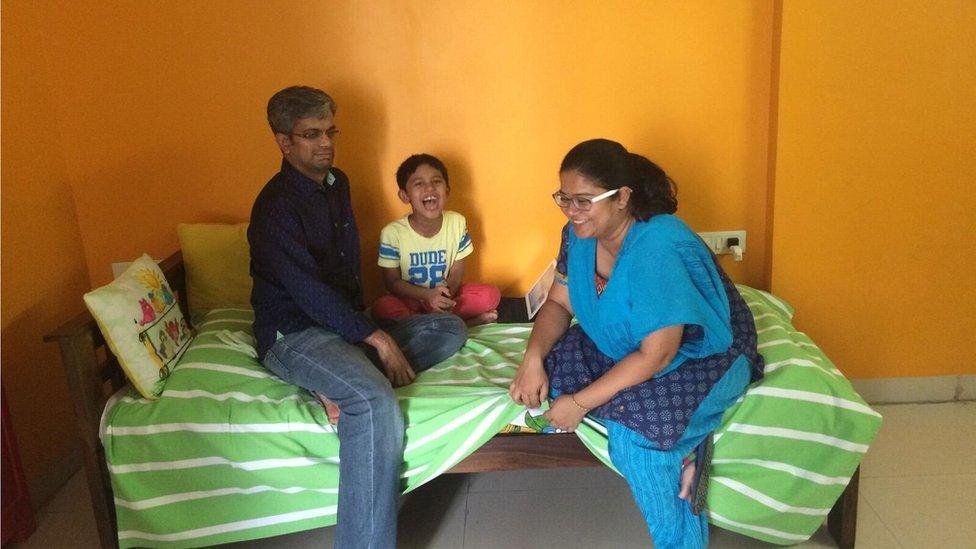
The Reddy family on their son's new flat-pack bed
To convince him to sleep without safety rails, Ayanti let him choose his bed online - on a popular ecommerce website. It was delivered flat-packed and they put it together themselves.
She says she's excited about going to a store like Ikea because she can buy it off the shelf and come back home to build it herself.
Not unusual in other parts of the world - but this is something Ayanti says her parents' generation would have never done.
"What I do remember about my childhood is furniture usually got made during weddings as a gift from girl's parents. It was usually considered as having to be heavy and ornate because the heavier it was, the more ornate it was, the more value it had," says Ayanti.
"While we have some good memories associated with stuff like that we need things to be a little lighter now, easier to manage."
Meatballs are coming
It's not just furniture; Ikea is also bringing Swedish meatballs to India - at least the chicken and vegetable versions.
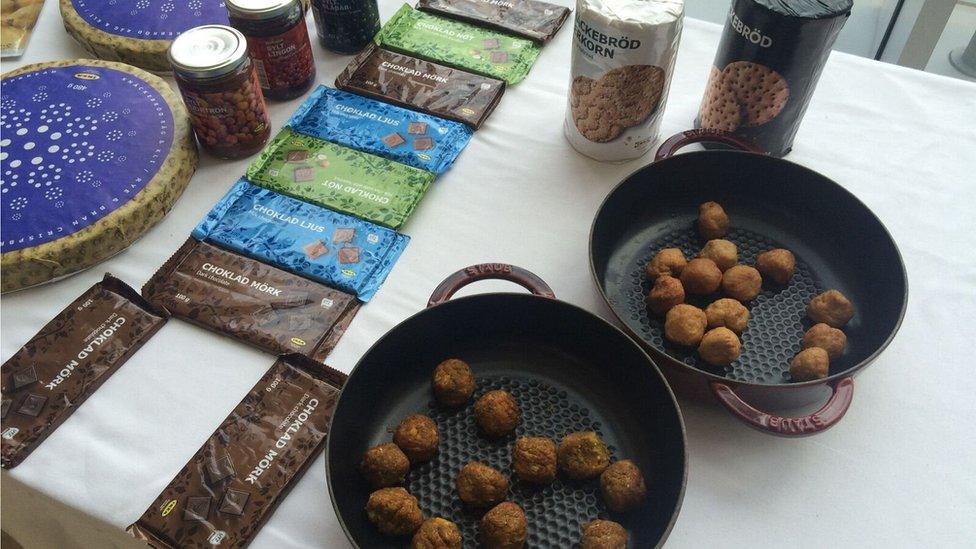
Ikea's famous meatballs are also coming to India
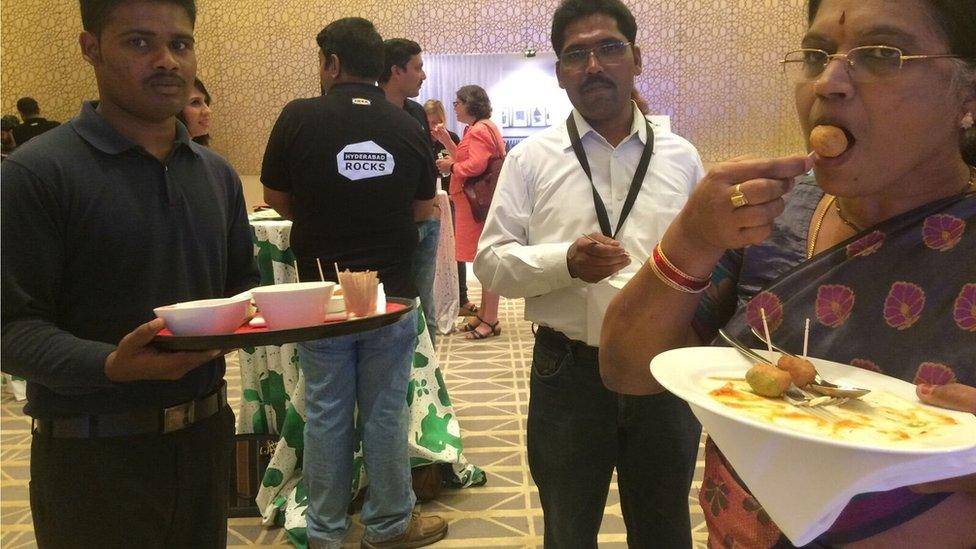
Locals taste Ikea's chicken and vegetable "meatballs"
Chef Henrik Osterstrom is the firm's food manager in the country. He is experimenting with food here to bring a large menu to the cafe they have planned.
As he hands out plates of fried salmon, rye bread with cheese and meatballs with sauce, people seem to love it.
So in a city known for its spicy, rich biryanis, what do people make of meatballs?
One woman said they were nothing like she had eaten before and loved it with the lingonberry jam.
Others preferred it with the more traditional Indian mint chutney.
Swedish meatballs may have found new fans, but the furniture may take just a little while longer to appeal to Indians.
- Published8 July 2014
